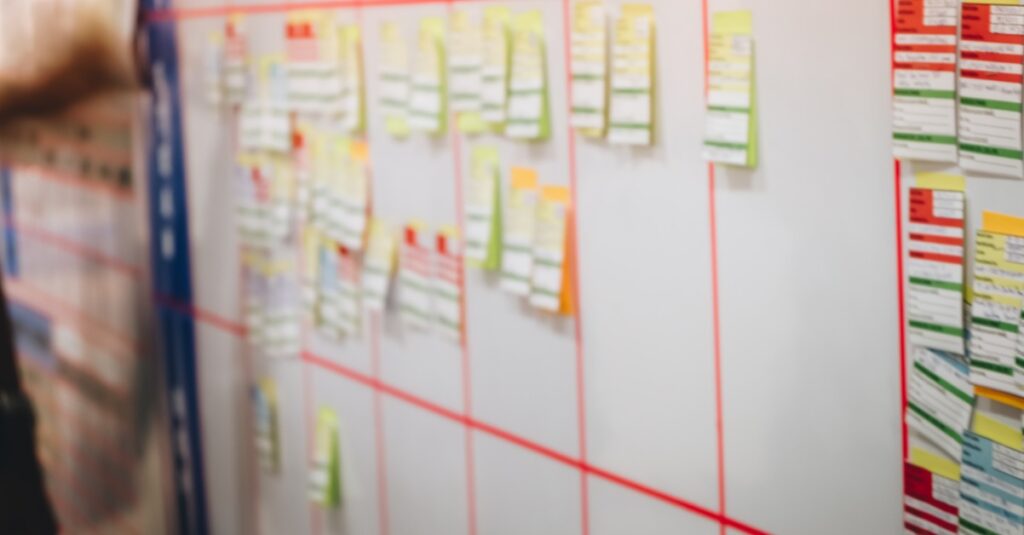The definition of the word “Lean” is as follows according to the Google dictionary, “Thin, especially healthily so; having no superfluous fat”. James Womack’s book “The machine that changed the world” used word “Lean” to describe the Toyota Production System. If an organization to be termed as “Lean”, there has to be “Fat” in the organizations. How can someone determine the fattiness of an organization?. Before understanding the fattiness of an organization, let us look at ourselves as humans. For many of us, gaining fat is annoying
What is fat in human bodies?
Google dictionary defines “Fat” as “a natural oily substance occurring in animal bodies, especially when deposited as a layer under the skin or around certain organs”. There is a certain amount of fat in our bodies. However, having an excess amount of fat is considered as unhealthy.
How can we measure the Fat?
There are many ways. Using a scale is the easiest method. Sometimes, the feedback from others helps us to realize. The important fact here is, it is harder for oneself to determine their fattiness by just looking at a mirror. A “Before” and “After” comparison for someone to correctly determine whether he/she has gained too much fat.
What are the consequences of gaining too much fat?
The evil consequences of gaining excess fat includes slowness in reactions, losing flexibility and exposure for diseases. One of the most potential causes of gaining fat in our bodies is the consumption of starchy foods. In addition, lack of time on physical exercises improves the fat content in the body.
Let us now look at an organization. To understand the fat in an organization, we need to understand what are the muscles in an organization.
What is Fat in an Organization?
The existence of an organization is depended on the product or the service they offer for the customers. More precisely, due to the “Value” they provide for the customers. An organization has to perform various “Value-Adding Activities” to create the required “Value” for customers. Any activity that does not add value to the customer is a “Fatty” activity. In “Lean Manufacturing” terms we called such activities as “Non-Value-Adding Activities” or “Wastes”. There are seven types of wastes. Transportation, Inventory, Excess Motion, Waiting, Over Processing, Over Production and Defects are the seven deadly wastes.
How can an organization measure the Fat?
This is the trickiest part. A person fails to determine the increase in his/her fattiness by looking at the mirror. Similarly, it is hard for the employees to recognize organization fat, unless they use the “lean” techniques. An organization can keep its eye on KPIs like process lead time and cost to assess the fat level. A tool like process mapping helps to visualize the value-adding percentage and the “Fat” content of the process. Generally, an ordinary company has more than 90% of fat/waste in its total process lead time.
Can employees see Fat in the organization?
Yes anybody can see the fat by calibrating their eyes to see them. Typically in a production environment, the inventory represents the Fat. Higher inventory increases the process lead time, working capital, human resources, and space.
What about a service organization?
Since a service organization does not have physical inventories, it is difficult to spot the fat through naked eyes. However, in a service organization “Waiting or Delays” represents the Fat. The tools like process mapping helps to quantify the delays in the process. The waiting increases the lead times, handling times, resources and complexity of the process.
Why organizations gain Fat?
Think about a startup. There can be one or two people who play multiple roles from the CEO to the janitor of the organization. However, when the organization starts to grow, founders hire new managers and form new departments to support the core functions. Each manager hires teams and adds up more processes. As organizations grow, more people, more processes and more systems will be introduced.
Many people tempt to eat fast food and not worry about physical exercises. Similarly, the managers become comfortable with current status. And they do not want to challenge it as long as they offer what customers demand. The managers would stick to a set of behaviors that have already given the success in the past. And they would be resistant to adopt new behaviors that disrupt the status quo. It is similar fat people refusing to change their meal plan or adopt an exercise routine even they are overweight.
How Fat organizations try to become lean?
Many Fat organizations realize that they are becoming fatter by looking at their top lines and bottom lines. If top line increases and bottom line decreases over the years, it sends a signal that organization is getting fatter. The popular remedy to become lean is to layoff people by firing or offering VRS (Voluntary Retirement Schemes). It is like going for a surgical operation to reduce the fat in the body. Yes, it is fast but not healthy.
How does Toyota become a Lean Organization?
For a Fat person, the best countermeasure to reduce the fat is to adopt healthy diet behaviors and exercise routines. If a person consistently follows dietitian’s and gym instructor’s routines ,he can become lean healthily and further improve over time.
Similarly, Toyota is executing many routines to stay lean and healthy. Toyota built their management system around the concept of Genchi Genbutsu. Every manager pays a visit to their value-adding area three times a day, every day. The purpose of the visit is to identify any visible fat/waste in the processes. Then they challenge the team to eliminate such fats through systematic problem-solving and kaizen techniques.
Eco system in Toyota
Toyota has built an ecosystem to support their managers to sustain these practices. They have developed a Visual Factory using techniques like Kamishibai and Oobeya. These concepts add plenty of visuals for managers to keep track of their workouts and the results. These are so powerful where anybody can understand current status and deviation of processes within a few seconds. And the management structure demands every immediate leader to support the team member to function the “Standardized Worksheet“. The standardized worksheet guides the maximum quality and optimum productivity.
By reducing the inventories, companies can reach to the ultimate level of lean. The concept of Just In Time with Kanbans challenge any inventories in the processes. The concept of Built-In Quality helps to scientifically solve problems at the rate of production.
Read More about – Lean Yellow belt , Lean Green Belt



